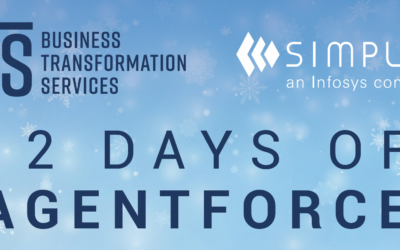Decentralization, data capture, and digital transformation–oh my!
The demands placed on the world’s healthcare systems over the past two years to deliver effective patient care continues to impact how healthcare moves forward.
In 2022, healthcare organizations took a closer look at COVID-motivated initiatives to develop long-term strategies that respond to the need for seamless and efficient workflow processes within a decentralized service environment that also enables better patient outcomes.
A tall order, to be sure. And with over half (61 percent) of surveyed patients wanting better patient engagement and personalized care from their providers, healthcare leaders turned to innovative solutions based largely on digital automation, robust data capture and interoperability capabilities to simplify payment processes, expand access to patient care and ensure the focus remains on the patient.
Here’s how modern CRM platforms effectively managed post-pandemic challenges this year and offer scalable capabilities for future success.
Leveraged Real-Time Data
Captured data is the foundation for personalized, efficient, innovative healthcare solutions. For instance, Salesforce Health Cloud provides a single source of centralized data. With this technology, organizations can standardize structured data and connect care teams with patient information to ensure optimal, personalized care.
When Salesforce announced Genie for healthcare, organizations could now build engaging patient relationships based on real-time data that impact treatment, such as prescriptions, examinations, diet, vitals from wearable devices, and identify potential challenges in care access. On a larger scale, providers can collect region-based health data for research, and analyze demographics for potentially underserved communities.
By using algorithms and machine learning to build comprehensive patient profiles, predictive analytics improved healthcare delivery services to determine when patients need follow-up appointments, prescription refills, etc.
Used a Centralized Platform to Manage Decentralized Care Models
During the COVID-19 pandemic, expanded telehealth services, virtual health, wearable devices, and other forms of remote patient care made a lasting impression on how we deliver care. But to truly improve patient outcomes, this data must “live” in a central location for accessibility among care delivery providers.
As a strategic part of digital transformation, more healthcare networks implemented an integrated CRM platform to leverage structured data collected via telemedicine, smaller clinics, and wearable technology, for example, to create personalized, seamless, and comprehensive care initiatives. This innovation proved strategic to support patient-centric care models.
Using Predictive Data to Build Patient-Centric Care Models
For successful patient-centric care, many healthcare organizations implemented a holistic process for delivering care. Some of the advantages of this technology quickly showed in readmissions.
Research shows that readmissions is the costliest expenses hospitals face, with annual costs reaching $41.3 billion for patients readmitted 30 days after discharge. With communication being one of the leading factors in readmissions, a cloud-based CRM platform is essential for capturing historical data to predict readmission risks. Then applying this information to proactive measures to maintain communication with discharged patients to ensure their needs are met.
“Machine learning, supervised learning in particular, has the unique strength to learn patterns from historical data for prediction,” researchers Shuwen Wang and Xingquan Zhu reported. “Accordingly, many methods have been proposed to train predictive models to assess readmission risk of individual patients, using their past visit records combined with other information.”
Obviously, patient-centered care means understanding your patient’s history. But with a centralized CRM platform accessing predictive patient data–partnered with real-time data–healthcare providers can anticipate a patient’s needs, coordinate with providers and resources, and initiate proactive, preventative care. That is the future of patient-centered care.
In 2023, data remains the driving force for AI technologies to enhance treatment and research, expand interoperability for seamless treatment, and spearhead coordinated care among delivery systems with tools like Slack.
Using automated technology that does more with less manual effort and provides access to information where its needed ensures providers can focus on delivering the best care possible whenever and wherever people need it most.
To learn more about innovative, effective healthcare solutions with Salesforce products, let’s talk about your organization’s goals for 2023.















0 Comments